This article was co-authored by Alan O. Khadavi, MD, FACAAI and by wikiHow staff writer, Danielle Blinka, MA, MPA. Dr. Alan O. Khadavi is a Board Certified Allergist and a Pediatric Allergy Specialist based in Los Angeles, California. He holds a BS in biochemistry from the State University of New York (SUNY) at Stony Brook and an MD from the State University of New York Health Science Center at Brooklyn. Dr. Khadavi completed his pediatric residency at Schneider Children’s Hospital in New York, and then went on to complete his allergy and immunology fellowship and pediatric residency at Long Island College Hospital. He is board certified in adult and pediatric allergy/immunology. Dr. Khadavi is a Diplomate of the American Board of Allergy and Immunology, a Fellow of the American College of Allergy, Asthma & Immunology (ACAAI), and a member of the American Academy of Allergy, Asthma & Immunology (AAAAI). Dr. Khadavi's honors include Castle Connolly’s list of Top Doctors 2013-2020, and Patient Choice Awards "Most Compassionate Doctor" in 2013 & 2014.
There are 9 references cited in this article, which can be found at the bottom of the page.
wikiHow marks an article as reader-approved once it receives enough positive feedback. This article received 95 testimonials and 93% of readers who voted found it helpful, earning it our reader-approved status.
This article has been viewed 3,731,981 times.
You know the saying: “Leaves of 3, leave it be.” But sometimes you touch posion ivy before you see it. The oil produced by the plant (urushiol oil) causes redness, itching, and blisters when it comes into contact with skin. What’s more, the oil can be carried on things like clothing or pet fur, making for an unpleasant and itchy surprise long after your hike. Thankfully, most poison ivy rashes can be treated at home, and we’ll show you how to identify, apply first aid, and treat a rash yourself. That said, if your rash is particularly intense or debilitating, see a doctor as soon as you can—we’ll help with that, too!
Things You Should Know
- Rinse the affected area with rubbing alcohol or cool water as soon as possible.
- Wash the area with mild soap, then apply corticosteroid and cortisol cream up to 4 times a day.
- Wash your clothes, pets, or any other personal items to stop the spread of the urushiol oil.
Steps
Recognizing a Poison Ivy Rash
-
1Watch for an itchy red rash 12-48 hours after contact with poison ivy. The rash might appear earlier if you contact a lot of the urushiol oil. You'll only have a rash where the plant's oil touched your skin, so it often appears in a line that resembles small bug bites.[1] In most cases, the rash disappears in 14-20 days untreated, but can fade faster with treatment.[2]
- The rash may spread from scratching if you still have oil on your skin.
- Also check for poison oak rash or poison sumac rash, which are similar to poison ivy rashes and treated in the same manner.
-
2Check for rash splotches if a contaminated pet or item touched you. The oil from a poison ivy plant can linger on your pet's fur or on clothing that came in contact with the plant. This lingering oil can also cause rashes. If you suspect your pet or personal items have contacted poison ivy, check yourself for splotchy areas where the items contacted your skin.[3]
- Wash any clothes that came in contact with poison ivy immediately and separately. Handle them as little as possible.
- If your pets come into contact with poison ivy, wash them immediately with shampoo and water. Also wash anything you know they touched, as the irritating oil could remain on the surface.
- Dogs and other pets don’t typically show symptoms of poison ivy rash, but wash them anyway, and take them to a vet if they show signs of irritation, like licking or scratching.[4]
Advertisement -
3Watch for blisters and swelling around the affected area. Blisters are typical symptoms of poison ivy rashes, and can vary from pin-sized to dime-sized. They usually develop within 1 to 14 days after contact with poison ivy. Your blisters may pop and release a clear fluid, but this is normal and won't spread the rash. You'll also have inflammation as a result of the rash, which can cause swelling.[5]
- Resist the urge to pop the blisters; allow them to settle or break on their own to reduce irritation.
- Poison ivy rashes are often accompanied by more severe swelling than other rashes.
- If you notice pus on the affected skin, then your rash is likely infected. See a doctor as soon as possible for treatment.
Providing First Aid
-
1Dab the area with rubbing alcohol to remove the oil, if possible. Rinse the affected skin with rubbing alcohol, or use a soaked cotton swab or an alcohol wipe. It's best to do this within 10 minutes of contacting the plant to avoid a rash, but you can do it later to remove any oil that's lingering on your skin.[6]
- Don't rub the wipes on areas that didn't contact the oil. You don't want to accidentally spread it. After using gauze or a cotton swab, throw it away.
- Avoid applying any sort of alcohol to the area around your eyes to avoid irritation.
-
2Rinse your affected skin with water as soon as you can. Run cool water over your affected skin for several minutes, but don't soak the area in still water. After thoroughly rinsing, wash the area with plain, mild soap (in the shower, if possible). Wash off the poison ivy oil as soon as you can to reduce your chances of developing a rash or having the oil spread across a larger area.[7]
- If possible, use a clean washcloth to scrub the affected area to avoid passing oil between your hands.
- The water needs to be running in order to remove the oil. If you soak in water, the oil will mix with the water and affect more of your skin.
- Avoid using hot water, which opens your pores and could cause your skin to absorb more of the oil.
-
3Apply crushed jewelweed to the rash if you're stuck outdoors. Jewelweed is often called nature's natural poison ivy remedy. It is a low-growing leafy bush that produces yellow and orange bell-shaped flowers. Mash up some jewelweed to make a paste, then apply it to your rash. Leave it on until it dries, then rinse it away with cool water.[8]
- Jewelweed helps by countering the oil contained in the poison ivy. It can help you avoid a rash or reduce the intensity of your symptoms.
- Only use paste you made from the jewelweed itself. Don't rely on extracts and soaps made from jewelweed, which aren't as effective.[9]
- Apply as much jewelweed sap as needed to relieve your symptoms.
Relieving Symptoms at Home
-
1Use an over-the-counter corticosteroid cream for up to a week. Dab a small amount of the cream onto your rash using a cotton swab.[10] Use only as much of the cream as is necessary to relieve your symptoms, as corticosteroid cream may cause side effects when used over a long period of time. Reapply the cream every 4 hours as needed.[11]
- Stop using the cream after 1 week, after which it becomes less effective and may cause negative symptoms like thinning skin.
- Read the label and follow all of the instructions, and avoid use for pregnant or very young children. Check with your doctor before using the product.
-
2Apply calamine lotion as needed to stop itching. Calamine lotion is a common over-the-counter itch reliever.[12] Use a cotton swab to dab the calamine lotion onto your rash, then let it dry. Reapply it every 3-4 hours as desired.[13]
- Follow all of the instructions on the label. It's best to check with your doctor before applying any over-the-counter medications.
- Keep in mind that calamine lotion may stain clothing and sheets if it gets on them.
- Avoid applying the lotion to the face or genitals.
-
3Take an oral antihistamine daily as directed by a doctor. Opt for diphenhydramine (Benadryl), cetirizine (Zyrtec), loratadine (Claritin), or fexofenadine (Allegra).[14] An antihistamine will reduce your body's response to the rash, helping to control your symptoms. Talk to your doctor before you take an antihistamine, even if it's sold over-the-counter.[15]
- Check the label to see how often you should take your antihistamine. Diphenhydramine (Benadryl) is often taken every 4 hours, while others are taken just once a day.
- Check the label on your product to see if it causes drowsiness, and note that alcohol will intensify this effect. If it does, avoid activities like driving or operating machinery.
-
4Reduce itching with a cool oatmeal bath. Run a cool bath, then mix in a colloidal oatmeal bath product, which is known to soothe skin irritation.[16] Add about 1 cup (85 g) of oatmeal product to your bath. Soak for 20 minutes, then rinse off the oatmeal with clean water before drying off.
- Alternatively, grind traditional rolled oats in a grinder or blender to create your own oatmeal bath blend.[17]
-
5Use a cool, wet compress for 15 to 30 mins to reduce swelling. Soak a clean rag in cool water and press it onto the affected area. Use a cold compress several times a day—be sure to use a clean rag each time.[18]
- Alternatively, soak the rag in an astringent liquid, such as chilled black tea or a 50/50 mixture of apple cider vinegar and water. Some people find more relief with these options.
- If using vinegar, test it on a small area of your skin first to see if you are sensitive to it.
- Wash the rag separately from other clothing.
-
6Use baking soda as a paste or a soak to treat itching. Mix 2 parts of baking soda with 1 part of water to make a paste, or add about 1 cup (128 g) of baking soda to a bath. Baking soda may draw out the poison and soothe your rash for hours at a time.[19] If you're using a paste, wait until it dries, then rinse it off with cool water.
- Reapply the baking soda a few times a day, if you like.
- Baking soda paste also makes an ideal ointment for treating poison ivy blisters.
-
7Apply aloe vera to your rash to help with itching. Aloe vera gel has proven soothing effects for itching or irritated areas. Rub over-the-counter gel on the affected area as often as needed. Or, harvest your own gel by breaking open an aloe leaf and scraping the gel out of the inside.[20]
- If you're buying the gel, make sure the product you choose doesn't have any added ingredients, which may irritate the rash.
Getting Medical Treatment
-
1Seek emergency medical care for severe symptoms or a persistent rash. In most cases, you don't need to see a doctor for poison ivy. It's okay to treat it at home! That said, visit a doctor if your rash covers a large area, the symptoms interfere with your daily life, or the rash doesn't go away after 2-3 weeks.[21]
- For example, a “large area” might mean your entire calf or forearm.
- See a doctor if the rash is on your face or genitals.
-
2Ask your doctor about an oral corticosteroid for severe itching. Your doctor may prescribe an oral corticosteroid, such as Prednisone, if you're experiencing extreme itching. It might also be an option if your rash covers a lot of your body. However, this medication isn't right for everyone, so your doctor might recommend sticking to over-the-counter options.[22]
- Oral corticosteroids can cause side effects, so only use them as needed. The most common side effects with short-term use include sleeping issues, appetite changes, and mood issues.[23]
- Follow your doctor's directions closely when taking prescribed medications.
-
3Take a prescribed antibiotic in the case of an infection. You likely won't need an antibiotic, but the doctor may prescribe one if your rash becomes infected. This often occurs if the skin breaks or comes into contact with bacteria. Consult a doctor immediately if you notice pus or discoloration beyond redness on the rash.[24]
- Scratching increases your risk of developing an infection, since you can break the skin. Resist the urge!
Expert Q&A
Did you know you can get premium answers for this article?
Unlock premium answers by supporting wikiHow
-
QuestionWhat dries up poison ivy rash?
 Alan O. Khadavi, MD, FACAAIDr. Alan O. Khadavi is a Board Certified Allergist and a Pediatric Allergy Specialist based in Los Angeles, California. He holds a BS in biochemistry from the State University of New York (SUNY) at Stony Brook and an MD from the State University of New York Health Science Center at Brooklyn. Dr. Khadavi completed his pediatric residency at Schneider Children’s Hospital in New York, and then went on to complete his allergy and immunology fellowship and pediatric residency at Long Island College Hospital. He is board certified in adult and pediatric allergy/immunology. Dr. Khadavi is a Diplomate of the American Board of Allergy and Immunology, a Fellow of the American College of Allergy, Asthma & Immunology (ACAAI), and a member of the American Academy of Allergy, Asthma & Immunology (AAAAI). Dr. Khadavi's honors include Castle Connolly’s list of Top Doctors 2013-2020, and Patient Choice Awards "Most Compassionate Doctor" in 2013 & 2014.
Alan O. Khadavi, MD, FACAAIDr. Alan O. Khadavi is a Board Certified Allergist and a Pediatric Allergy Specialist based in Los Angeles, California. He holds a BS in biochemistry from the State University of New York (SUNY) at Stony Brook and an MD from the State University of New York Health Science Center at Brooklyn. Dr. Khadavi completed his pediatric residency at Schneider Children’s Hospital in New York, and then went on to complete his allergy and immunology fellowship and pediatric residency at Long Island College Hospital. He is board certified in adult and pediatric allergy/immunology. Dr. Khadavi is a Diplomate of the American Board of Allergy and Immunology, a Fellow of the American College of Allergy, Asthma & Immunology (ACAAI), and a member of the American Academy of Allergy, Asthma & Immunology (AAAAI). Dr. Khadavi's honors include Castle Connolly’s list of Top Doctors 2013-2020, and Patient Choice Awards "Most Compassionate Doctor" in 2013 & 2014.
Board Certified Allergist
-
QuestionWhat does a poison ivy rash look like?
 Alan O. Khadavi, MD, FACAAIDr. Alan O. Khadavi is a Board Certified Allergist and a Pediatric Allergy Specialist based in Los Angeles, California. He holds a BS in biochemistry from the State University of New York (SUNY) at Stony Brook and an MD from the State University of New York Health Science Center at Brooklyn. Dr. Khadavi completed his pediatric residency at Schneider Children’s Hospital in New York, and then went on to complete his allergy and immunology fellowship and pediatric residency at Long Island College Hospital. He is board certified in adult and pediatric allergy/immunology. Dr. Khadavi is a Diplomate of the American Board of Allergy and Immunology, a Fellow of the American College of Allergy, Asthma & Immunology (ACAAI), and a member of the American Academy of Allergy, Asthma & Immunology (AAAAI). Dr. Khadavi's honors include Castle Connolly’s list of Top Doctors 2013-2020, and Patient Choice Awards "Most Compassionate Doctor" in 2013 & 2014.
Alan O. Khadavi, MD, FACAAIDr. Alan O. Khadavi is a Board Certified Allergist and a Pediatric Allergy Specialist based in Los Angeles, California. He holds a BS in biochemistry from the State University of New York (SUNY) at Stony Brook and an MD from the State University of New York Health Science Center at Brooklyn. Dr. Khadavi completed his pediatric residency at Schneider Children’s Hospital in New York, and then went on to complete his allergy and immunology fellowship and pediatric residency at Long Island College Hospital. He is board certified in adult and pediatric allergy/immunology. Dr. Khadavi is a Diplomate of the American Board of Allergy and Immunology, a Fellow of the American College of Allergy, Asthma & Immunology (ACAAI), and a member of the American Academy of Allergy, Asthma & Immunology (AAAAI). Dr. Khadavi's honors include Castle Connolly’s list of Top Doctors 2013-2020, and Patient Choice Awards "Most Compassionate Doctor" in 2013 & 2014.
Board Certified Allergist
-
QuestionDoes poison ivy leave a permanent mark on the skin?
 Zora Degrandpre, NDDr. Zora Degrandpre is a Natural Health Doctor and Licensed Naturopathic Physician in Vancouver, Washington. She is a grant reviewer for the National Institutes of Health and the National Center for Complementary and Alternative Medicine. She received her ND from the National College of Natural Medicine in 2007.
Zora Degrandpre, NDDr. Zora Degrandpre is a Natural Health Doctor and Licensed Naturopathic Physician in Vancouver, Washington. She is a grant reviewer for the National Institutes of Health and the National Center for Complementary and Alternative Medicine. She received her ND from the National College of Natural Medicine in 2007.
Natural Health Doctor
Warnings
- Never burn poison ivy plants, as the smoke can cause serious lung issues. If you've been around burning poison ivy, see your doctor immediately.[27]⧼thumbs_response⧽
References
- ↑ https://extension.umd.edu/resource/poison-ivy
- ↑ https://www.iwu.edu/physical-plant/tailgate/grounds-tailgate/april-poison-ivy-oak-sumac.pdf
- ↑ https://www.healthychildren.org/English/health-issues/conditions/skin/Pages/Poison-Ivy-Treatment.aspx
- ↑ https://www.akc.org/expert-advice/health/can-dogs-get-poison-ivy/
- ↑ https://www.hopkinsmedicine.org/health/conditions-and-diseases/poison-ivy-rash-in-children
- ↑ https://www.iwu.edu/physical-plant/tailgate/grounds-tailgate/april-poison-ivy-oak-sumac.pdf
- ↑ https://www.iwu.edu/physical-plant/tailgate/grounds-tailgate/april-poison-ivy-oak-sumac.pdf
- ↑ https://www.fs.usda.gov/wildflowers/plant-of-the-week/impatiens_capensis.shtml
- ↑ https://www.ncbi.nlm.nih.gov/pubmed/22766473
- ↑ Alan O. Khadavi, MD, FACAAI. Board Certified Allergist. Expert Interview. 26 August 2020.
- ↑ https://www.nhs.uk/conditions/topical-steroids/
- ↑ Alan O. Khadavi, MD, FACAAI. Board Certified Allergist. Expert Interview. 26 August 2020.
- ↑ https://kidshealth.org/en/parents/poison-ivy.html
- ↑ Alan O. Khadavi, MD, FACAAI. Board Certified Allergist. Expert Interview. 26 August 2020.
- ↑ https://www.hopkinsmedicine.org/health/conditions-and-diseases/poison-ivy-rash-in-children
- ↑ https://myhealth.alberta.ca/Health/aftercareinformation/pages/conditions.aspx?hwid=uf8400
- ↑ https://www.insider.com/guides/beauty/oatmeal-bath
- ↑ https://www.quebec.ca/en/health/health-issues/a-z/allergic-reactions-caused-by-poison-ivy
- ↑ https://www.iwu.edu/physical-plant/tailgate/grounds-tailgate/april-poison-ivy-oak-sumac.pdf
- ↑ https://www.muhealth.org/our-stories/when-might-poison-ivy-warrant-office-visit
- ↑ https://www.healthychildren.org/English/health-issues/conditions/skin/Pages/Poison-Ivy-Treatment.aspx
- ↑ https://www.healthychildren.org/English/health-issues/conditions/skin/Pages/Poison-Ivy-Treatment.aspx
- ↑ https://www.nhs.uk/conditions/steroids/
- ↑ https://kidshealth.org/en/parents/poison-ivy.html
- ↑ https://extension.umd.edu/resource/poison-ivy
- ↑ https://www.peacehealth.org/medical-topics/id/hw107895
- ↑ https://extension.umd.edu/resource/poison-ivy
About This Article
Seek immediate medical attention if you are having trouble breathing. To get rid of poison ivy rashes, rinse the affected area with large amounts of cold water as quickly after the exposure as possible, then rinse again with a little dish soap to break up the poison ivy’s oils. Do not use hot water, as it will open your pores and cause more of the irritants to enter your body! Next, dip a cotton ball in rubbing alcohol and pat it over the affected area to remove any last remnants of the poisonous oil. If the rash is still bothering you, you can soothe the skin by applying aloe vera gel or a baking soda paste to the rash. Keep reading to learn about over-the-counter treatments you can use for your rash.
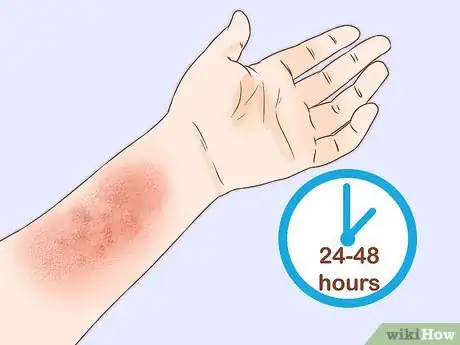




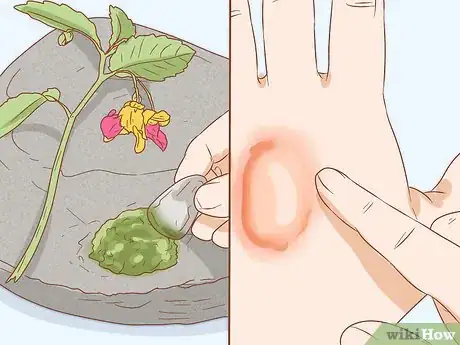
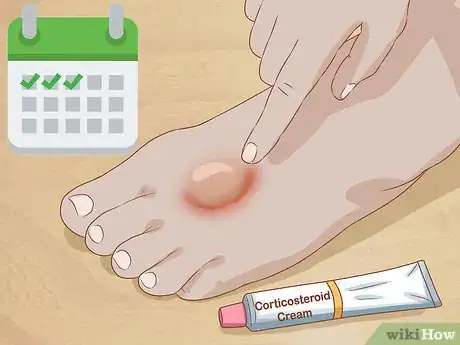

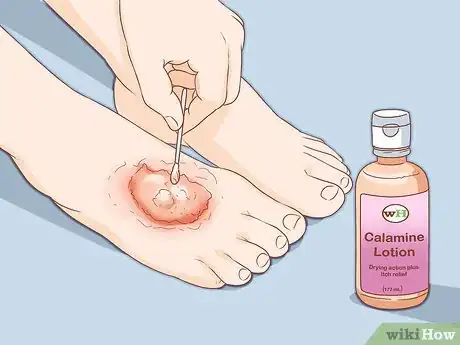
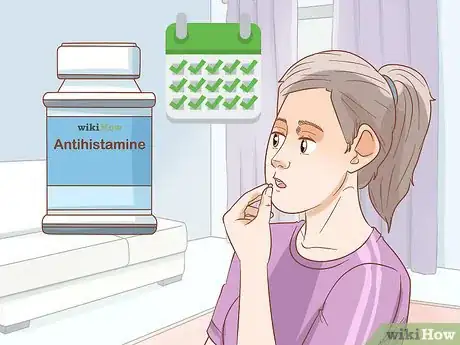

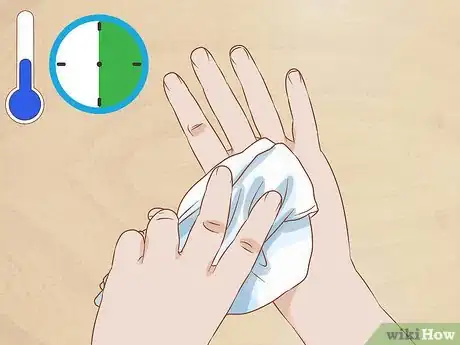

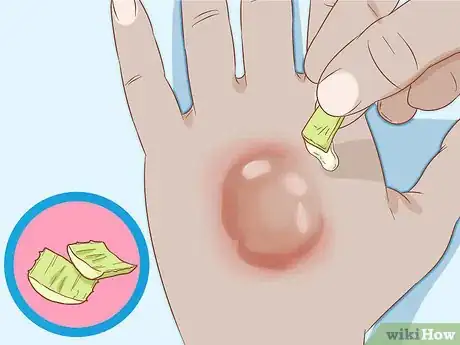
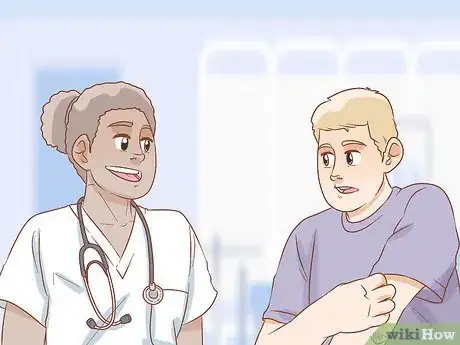
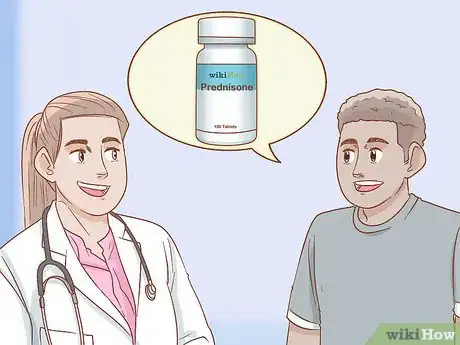
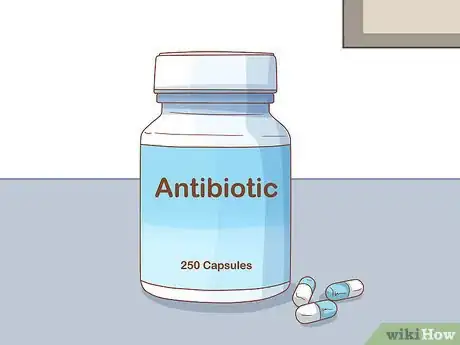
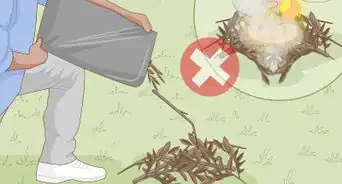
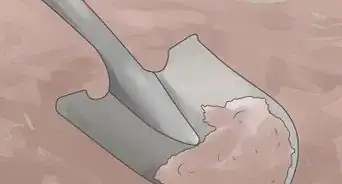



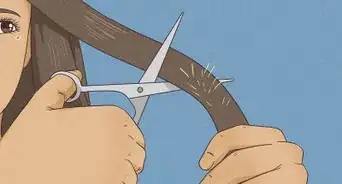

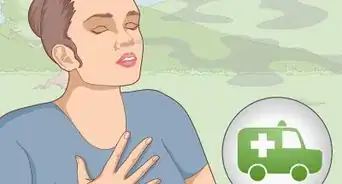
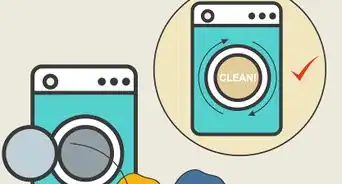
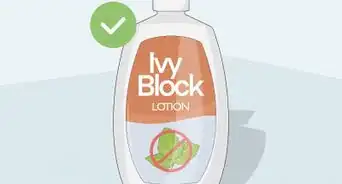

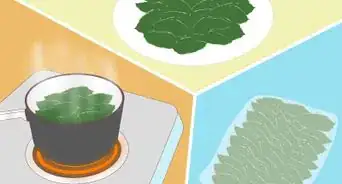

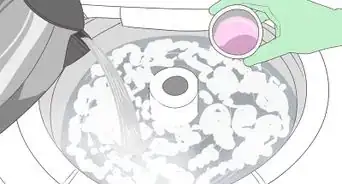









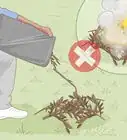


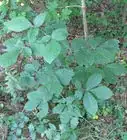



































Medical Disclaimer
The content of this article is not intended to be a substitute for professional medical advice, examination, diagnosis, or treatment. You should always contact your doctor or other qualified healthcare professional before starting, changing, or stopping any kind of health treatment.
Read More...